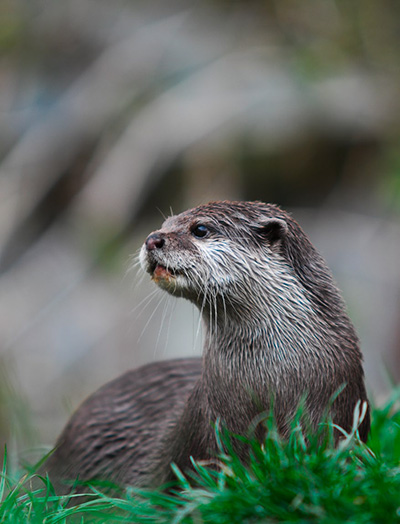
The number of otters in Germany has increased significantly. Subsequently, major economic problems are arising in traditional pond farming. Once the rivers are bare of fish in the winter, these predators increasingly turn to the pond facilities of fish farms for prey. In summer, the female otters teach their young to fish, killing more fish than they eat. Otter consultants and the fishery associations can provide information on any support available for defence measures.
One of these is the use of electric fences. The
wires are electrified either using a powerful
12 V AKO fence device or a
230 V AKO power pack where there is a nearby power supply. The advantages of power packs (we recommend installing a ground fault circuit breaker): unrestricted tending periods, more secure in the case of heavy vegetation and long fences and also saves more energy than battery units.
AKO Duo electric fence devices are an interesting alternative – 230 V mains supply and 12 V battery as two energy sources in one device. In general, this requires a powerful
12 V AKO fence device with a fence voltage of around 4000 to 5000 volts and an impulse energy of 1 to 5 Joules. Optimum earthing must be ensured.
AKO plastic posts with a total height of 70 cm (18 cm ground nails) are set up in intervals of 5 to 6 m around the fish ponds. A wooden post is driven in at the corners of the pond for stability and
insulators screwed in.